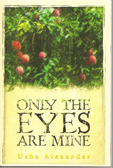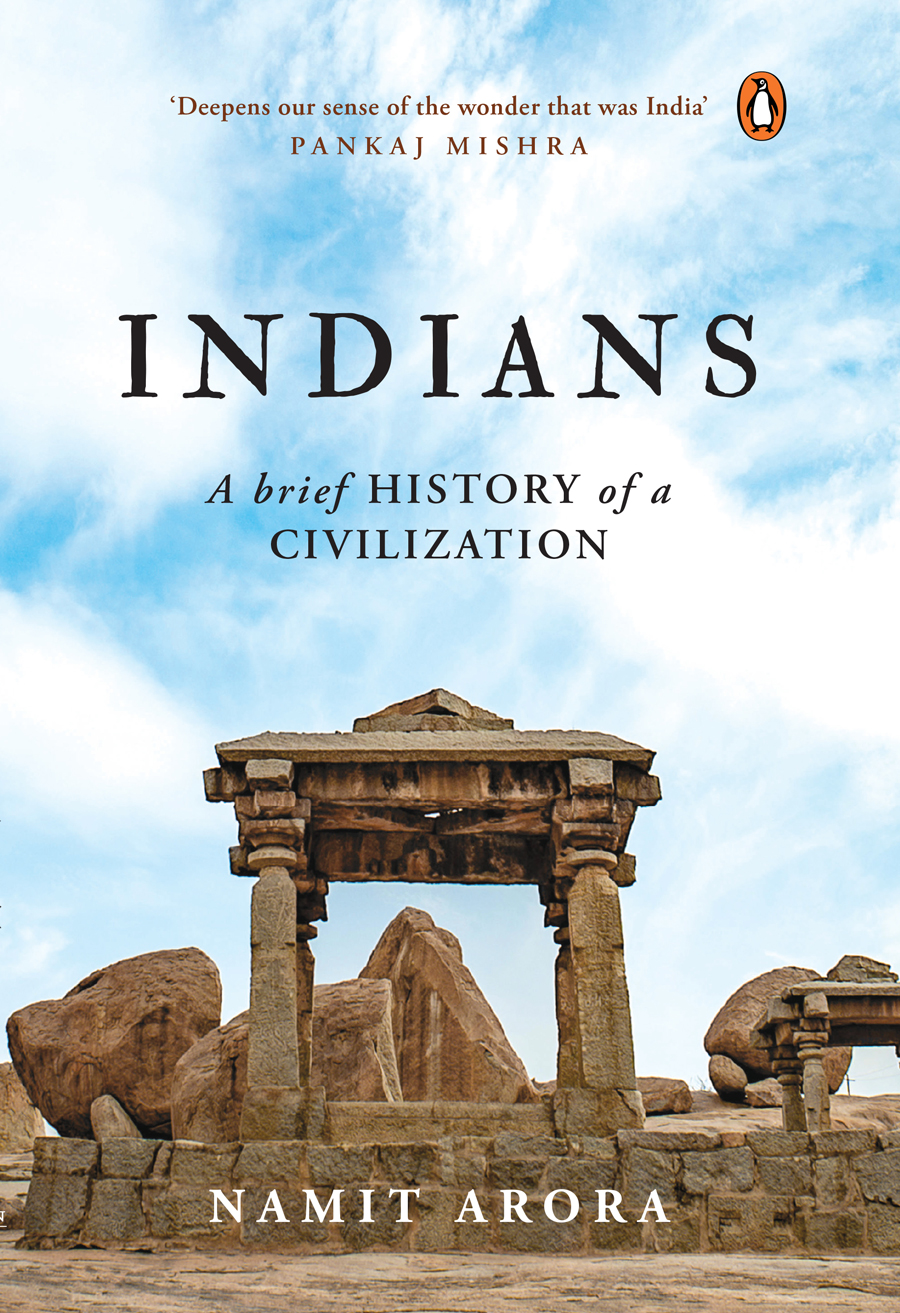| Index of articles from the Blog |
| Animals |
| Anthropology & Archaeology |
| Art & Cinema |
| Biography |
| Books & Authors |
| Culture |
| Economics |
| Environment |
| Fiction & Poetry |
| History |
| Humor |
| Justice |
| Philosophy |
| Photography |
| Politics |
| Religion |
| Science |
| Travel |
Books by
Books by
|
By Usha Alexander | Apr 2008 | Comments
Within a few days, Lin finds himself settled in Prabakar’s slum, living cheek by jowl with 25,000 of India’s destitute who have migrated from every corner of India to live in this city of dreams. He finds himself cast as the slum “doctor,” dispensing first aid to the stream of humanity that flows past his shanty door, and is quickly drawn into the lives of his neighbors, learning Hindi, making friends, and fully participating in the life of the community. He remains among them for two years, but he never reveals the truth of his past to any of his fellow slum-dwellers. It is through Roberts’s observations of and attachment to the life of the slum that this book plants its foundation and Lin gropes for his own moral ballast. In vivid detail, Roberts lays out the lives of the slum-dwellers, the everyday mechanics by which they live, aiding each other in times of want, coalescing in a moment into efficient squads to combat floods, fire, and cholera. Justice is reckoned by a headman, who rules solely through the respect of his constituency, and dispensed by the community at large. As Lin is immersed in this cast of characters of every condition and persuasion, each one fully textured and brought to life as individuals with their own aspirations, needs, choices, he marvels at the miracle of it, at its inherent peace. That such a tangled mass of humanity, representing such a multitude of languages, beliefs, and lifestyles, could function as this chaotic, unified whole awes him. It’s only possible, he surmises, because of a kind of love, born of necessity, that fills up the wretched gullies, and spills out on all who come near, even a low-life such as himself. And this, ultimately, is what Shantaram comes to be about: Love, in all its forms and degrees. The love of our fellows, our parents, our brothers and sisters and friends and mates. The love of ourselves. That most human engagement which drives us, completes us, injures us, heals us, ruins us, saves us. Never pure, simple, or clean, often untrue, it is nevertheless our unavoidable condition and our only hope. For such a tough guy, surprisingly, Roberts never flinches from his subject.
This village experience--and a good deal more--happens within the first couple hundred pages of the 900+ page novel, and the rest of the book is Lin’s account of how it's just never that easy. As Prabakar and then Abdullah emerge as Lin’s dearest friends and anchors in the twin spheres of his fractured life, it’s not always obvious to Lin or the reader what is the right path for the beleaguered anti-hero; it’s only clear that he’s not on it. Fear for survival, ordinary cowardice in human relationships, and the longing for love and approval cloud his judgment and motivate his choices over and over again, in desperately human ways. So that each time he steps further into a life of crime, we understand him; indeed, we understand to a surprising degree nearly every member of his cohort of damaged ex-pats and mafiosos who populate both the seamy and glittery sides of Bombay: thugs, murderers, pimps, counterfeiters, smugglers, and drug dealers from every corner of the globe. These colorful characters make up the other side of Lin’s Bombay life outside of the slum. If Roberts’s telling is to be believed, Bombay is rife with gangsters, felons, and fugitives from anywhere and everywhere on earth. Though it’s always clear to the reader that he’s running with the wrong crowd, Lin identifies with this rabble. And again, he gives them to us as multilayered wholes, far more nuanced than the gangsters of popular cinema. Take the morose, sardonic Frenchman, Didier, the endearingly wounded idealist, whose eyes fill with tears when he sees Lin’s body ravaged by prolonged starvation and torture after a stint in an Indian prison, who yet gives us every clue that underneath it all, he’s actually something of a sociopath; it’s an idea we resist until he steps forth in full mettle, ready to kill. Or Abdullah, the Iranian fugitive, Lin’s blood brother and partner in crime, perhaps even his darker alter ego, equally addicted to adrenaline, loyal and brave, and coolly capable of anything the job requires of him. Then there’s Lin’s proxy father, Abdel Khader Khan, the Afghani fugitive and mafia don, whose earnest philosophies for acting in the greater good are constructed around his capacity for violence. Some might think we understand the bad guys a bit too well, in fact. It’s all to easy to forget, for long stretches of story-telling, what vicious thugs and cold-hearted villains these people are capable of being. But then again, perhaps that’s the point: In Roberts’s hands, every character is multifaceted enough to be a perfectly lovable human being, each one caught in his own struggle with self-loathing, each one blinded by her own fear, or grief, or longing, each one wandering soulfully down the wrong path toward their own destruction with the most human of intentions. Each one wanting, needing, and giving love. A good deal of Roberts’s power as a storyteller, in fact, is his ability to create such rich and living characters, each voice and history so unique and thoroughly imagined, it’s difficult not to presume that they represent actual people. But Roberts makes it clear on his website that while the events of the story are from real life, the characters and the structure of the story are pure invention. If Shantaram, the novel, disappoints at all, it’s in that Lin goes on endlessly taking two steps forward and three steps back; three steps forward and two steps back. It’s not that we see no change in the character, but as much as he creeps toward wisdom, his grief and self-loathing yet dog him to the end, pulling him back into his moral turpitude. While after much tribulation he does discern that the key to his salvation is to take full responsibility for the errors of his life, he never musters the courage to do so; there is no epiphany. But the consolation comes in knowing that the book’s anti-hero does eventually master his own life. We know this because Roberts, whose life this story mirrors, is today clean and sober and living in Bombay, where he has started up a proper free clinic for the slum-dwellers. He maintains an infrequently updated website through which he informs us that he is working hard on a sequel to Shantaram and also logs his philosophical theories, which he calls "cosmosophy." Before Roberts became addicted to heroine wound up in an Australian prison, he was a political activist and writer, and he was on track toward a professorship in philosophy. While living in Bombay as a fugitive, he also published several short stories in the local papers. So while Shantaram is Roberts’s only major work, he doesn’t come as a novice to writing. His mastery of character, novelistic structure, and setting cannot be oversold. His prose, however, alternates between precisely delicate, moving, and clunky. At times, he tries to pack too much meaning into too few words or lines, and he comes off sounding overly sentimental or forced. He overloads metaphors, carries them too far, or mixes them in ways that muddle or erode the force of his idea. This is especially true when dealing with the heaviest and deepest movements in Lin’s emotional life. But again, these are difficult themes to take on, and Roberts always plows through rather than pulling back. While this does lead to some awkwardness in the writing, I think it’s ultimately preferable to the alternative, which is to take the tack of coldness and blandness, such as is the favored mode in today’s literary establishment. But the book that Roberts gives us is ultimately more complex and difficult, braver for the author’s vulnerability than the airier and drier prose we’ve come to regard as modern. _________________ Shantaram profiled in Outlook India. |
Designed in collaboration with Vitalect, Inc. All rights reserved. |
|











